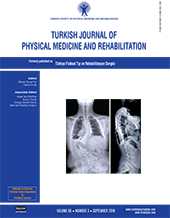The ability of calcaneal and multisite quantitative ultrasound variables in the identification of osteoporosis in women and men
Patients and methods: A total of 131 women (mean age 53.7±11.9 years; range, 21 to 79 years) and 109 men (mean age 57.8±13.7 years; range, 24 to 85 years) whose bone mineral density (BMD) at the spine and proximal femur was measured between January 2010 and January 2012, using dual-energy X-ray absorptiometry (DXA) were included. Acoustic bone properties were also examined using both a calcaneal and a multisite QUS. The receiver operating characteristic analysis with the calculation of areas under the curve (AUCs) to evaluate the ability of both QUS devices for the identification of osteoporosis. We also calculated a lower and an upper threshold at a specificity of 90% and at a sensitivity of 90%, respectively, for the identification of osteoporosis along with a threshold/cut-off value with the best compromise between sensitivity and specificity.
Results: All calcaneal QUS parameters showed significant AUCs within the range of 0.712 (for Broadband Ultrasound Attenuation [BUA]) and 0.764 (for Speed of Sound [SOS]) in women and ranging from 0.661 (for BUA) to 0.735 (for SOS) in men, while only radial SOS of the multisite QUS demonstrated a significant AUC value of 0.661 for identifying osteoporosis in women. A Quantitative Ultrasound Index T-score of -1.53 for women and -1.68 for men showed sensitivity and specificities around 70%.
Conclusion: Based on the results of this study, all calcaneal QUS parameters in both women and men and possibly radial SOS measurements of the multisite QUS in women may be helpful for the identification of osteoporosis.
Keywords : Calcaneal quantitative ultrasound, diagnostic ability, dual-energy X-ray absorptiometry, multisite quantitative ultrasound, osteoporosis
















